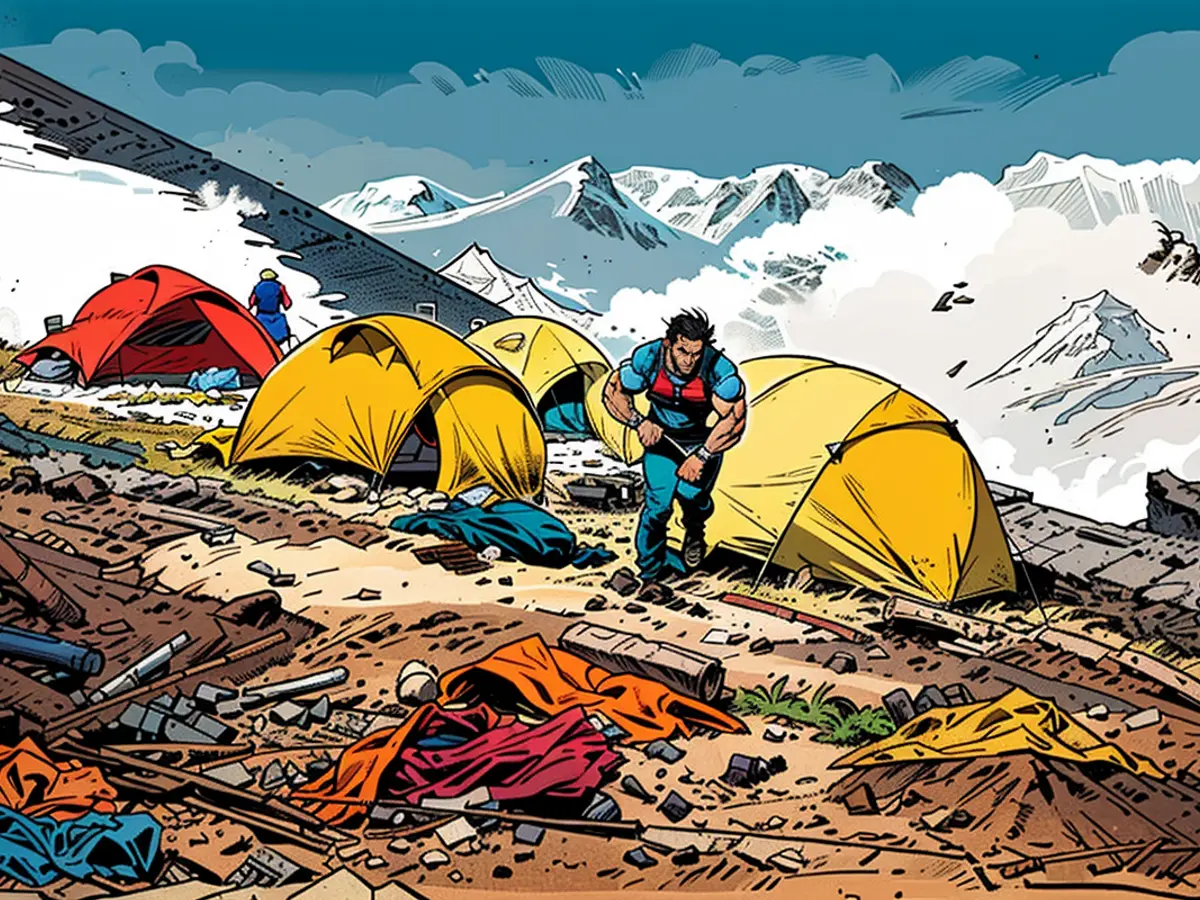Nepal Experiences Earthquake Devastation: Thousands Displaced and Homes Damaged - Military personnel gather eleven tons of waste, multiple human remains, and a skeleton from Mount Everest.
During a recent clean-up operation, Nepalese soldiers discovered four dead bodies and a skeleton on Mount Everest and nearby peaks Lhotse and Nuptse. Beyond these, volunteers have successfully removed 11 tons of waste from the area since April, per army reports.
Standing tall at 8,849 meters, Mount Everest is the world's tallest mountain. However, it carries the undesirable reputation of being the site of the world's highest garbage dump. Over the years, hikers and adventurers have abandoned their broken equipment, unwanted clothing, food wrappers, cooking ware, empty water bottles, beer cans, and oxygen tanks in its general vicinity. Additionally, a prominent amount of human waste is present, with some climbers even using these remains as identification landmarks.
If a hiker perishes on this mountainous terrain, their body is often left where it lies. Assessing the complexities in a rescue, one Albanian mountaineer and blogger, Alan Arnette, has stated that the expenses associated with saving a single frozen body range from 30,000 to 60,000 euros. A crew of seasoned Sherpas - accompanied by oxygen tanks - is typically tasked with the retrieval mission. A helicopter then transfers the body off the mountain. In some cases, families have chosen to leave their deceased loved ones on the mountain in honor of their affinity for the location.
Since the year 2019, the Nepalese army has spearheaded cleanup operations in the Himalayas. These volunteers have amassed a total of nearly 120 tons of trash from various mountains; alongside these were 14 dead bodies and several skeletons. There is also a financial incentive for those found culpable of littering - Sherpa guides, for instance, are granted $130 for each collected oxygen tank that can be repurposed. Expedition organizers must also enforce a new guideline: if tourists leave trash on the mountain, they face a $4,000 fine. This is an affordable sum when compared to the average handling fees, which typically range from 50,000 to 100,000 euros per climber. This encompasses costs for gear, oxygen tanks, shelters, flights, nourishment, and a team of local Sherpas.
Read also:
In the ongoing cleanup efforts, a Sherpa team discovered a skeleton among the collected waste on Mount Everest. Despite the challenging terrain and high costs, some families prefer to keep their deceased loved ones on Mount Everest as a tribute to their mountaineering spirit.






